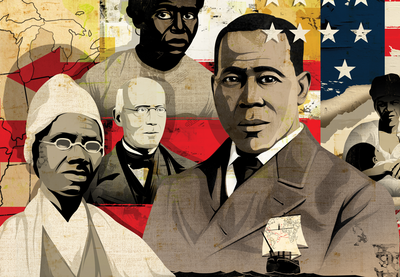Students will know that after the Civil War, formerly enslaved people faced many obstacles, including racism and political, social and economic inequality. Their descendants continue to face similar oppression today, though it looks different now than it did then.
What Else Should My Students Know?
20.A After the war, formerly enslaved Africans responded to freedom in different ways. Most tried to reunite with their families. Some set up new institutions, including schools, while participating in politics by voting and serving in government if they were able.
20.B Although formerly enslaved Africans were promised land and resources to set up their own farms, most did not receive these from the federal government. Some who did receive land and resources later had them taken away. Newly freed people had to figure out how to make a living and support their families.
20.C For about 10 years after the Civil War, the federal government provided services to the formerly enslaved and took steps designed to protect their political and civil rights, but these advances were later overturned.
20.D Provisions that granted rights to formerly enslaved Africans, such as the 13th Amendment, the Civil Rights Act of 1866 and the 14th Amendment, did not protect Indigenous people from enslavement. After the Civil War, the United States continued to war against Native nations to steal their land. The federal government also developed a series of schools to forcibly assimilate Indigenous children into white culture.
How Can I Teach This?
- Students should learn about Juneteenth and its continuing celebration today.
- Read trade books that discuss the experience of African Americans after the Civil War, such as I Thought My Soul Would Rise and Fly: The Diary of Patsy, a Freed Girl. Books such as Heart and Soul: The Story of America and African Americans preview the ongoing struggles that African Americans faced after the war.
- Previewing Reconstruction and its failure, students should consider the ways that the resistance and racism of the defeated Confederates persisted after the war, as former enslavers worked to bring back their cheap labor and subservient population. Looking at California, students can examine the ways that forced Indigenous servitude continued after the Civil War.
- Reading the 13th Amendment with students creates an opportunity to discuss its provision for the treatment of prisoners, opening up subsequent conversations about the continued enslavement of Indigenous people and the growth of the convict labor system.
- Students should learn about schools and universities, including historically black colleges and universities, that were created after the Civil War. Researching their legacies and traditions will give students a chance to appreciate the importance of these institutions in African American life. Though Tribal colleges and universities were created much later, students can also learn about their importance for Indigenous people today.
